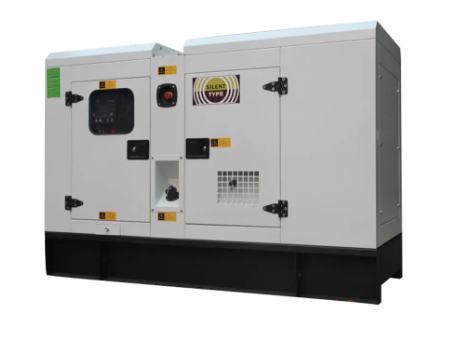Essential Lubrication System Maintenance
Monitoring Oil Levels and Viscosity
Getting the oil level right in generators really matters when it comes to keeping engines from wearing out too fast. Checking the oil regularly makes sure there's enough of it in the system where it needs to be, cutting down on friction that could otherwise lead to serious engine problems down the road. Don't forget about oil viscosity either. Finding the right consistency for what temperature conditions the generator will face means smoother operation regardless of how things heat up or cool down during use. A good viscosity gauge gives accurate readings, something that matters quite a bit if peak performance is the goal. Maintenance records built from these regular checks become gold mines of information later on. They show trends in generator behavior over months and years, helping predict when parts might need replacing before they actually fail.
Scheduled Oil Changes and Filter Replacements
Keeping up with regular oil changes and filter swaps remains one of the most important things when it comes to maintaining generators properly. Most manufacturers suggest getting the oil changed somewhere around 200 to 300 hours of runtime, although this number can go up or down depending on where and how hard the generator works. Oil filters need replacing too because they keep dirt and debris out of the lubrication system, something that protects the engine from damage over time. Using good quality synthetic oil makes a real difference in how well the generator runs and just how long it will last before needing major repairs. Switching to these better oils means less frequent maintenance visits overall, which saves money on parts and labor costs down the road for anyone running multiple units.
Cooling System Care for Optimal Performance
Coolant Level Checks and Mixture Balance
Keeping enough coolant in the system stops generators from getting too hot and keeps engines running efficiently. Weekly checks on coolant levels make sense since low coolant will definitely hurt how well a 30kVA generator works over time. Alongside checking levels regularly, getting the mix right between antifreeze and water matters a lot too. A good balance keeps things at the right temperature while stopping rust from forming inside components. When technicians record all these maintenance steps as part of their normal work flow, they end up with data that shows exactly when problems start developing or if certain practices need adjusting down the road.
Radiator Cleaning and Leak Inspections
Keeping the radiator clean matters a lot for good airflow and controlling engine temps. When dirt and leaves collect on it, air just doesn't move through properly anymore, which can make engines run hot real fast. Checking for leaks should definitely be part of regular maintenance work. Even tiny pinhole leaks will drain coolant over time, and we all know what happens when coolant gets low. Pressure testing every so often finds those sneaky leaks that simple looking won't catch. These tests save headaches down the road by spotting problems early instead of waiting until something breaks completely.
Fuel System Management for 30kVA Generators
Preventing Fuel Contamination and Degradation
Checking fuel tanks regularly helps stop contamination problems in those 30kVA power units we rely on so much. When water gets mixed in or sediment builds up over time, it really messes with how well the generator runs. This means expensive fixes down the road and lots of frustrating downtime. Good practice involves looking inside those tanks every so often to spot anything bad before it causes trouble. Adding some fuel stabilizer works wonders too for keeping diesel and gas fresh, especially important if the generator sits idle for months at a time. Keep track of all these inspections somehow. A simple logbook actually makes a big difference because it shows exactly when something went wrong and gives maintenance crews a clear picture of what's happening with the fuel system overall.
Fuel Filter Draining and Water Separator Maintenance
Draining water from fuel filters on a regular basis helps keep the fuel system intact. When water sits in the filters, it creates an environment where bacteria can grow and ruin fuel quality. The engine then gets contaminated fuel instead of clean stuff it needs to run properly. Checking fuel filters regularly makes sense too. Replace those filter cartridges when needed, either based on how long the generator has been running or what the manufacturer suggests. And don't forget to track everything done during maintenance sessions. Good records help make sure nothing slips through the cracks when it comes to keeping generators performing at their best over time.
Battery and Electrical Component Inspections
Testing Battery Charge and Terminal Connections
Monthly checks on battery charge levels really matter if we want our generator to start up properly when emergencies hit. The basic idea is simple enough just check if the battery holds enough juice to actually run the generator. Any problems need fixing fast before they turn into bigger headaches down the road. Looking at those terminal connections is another important step. Watch out for corrosion buildup and make sure everything stays snug. Those loose or rusty connections will definitely mess with how power gets delivered to the engine. Keeping records of these tests helps track battery condition over time. A good log lets us plan ahead for replacements instead of getting caught off guard by sudden breakdowns. Most folks find that writing things down in an old notebook works better than fancy digital systems anyway.
Electrolyte Level Checks and Corrosion Prevention
Keeping an eye on electrolyte levels helps keep a generator battery healthy over time. When the fluid gets low, topping it up with distilled water makes all the difference in how well the battery works. For those pesky corrosion issues, applying some kind of anti-corrosion stuff directly onto the battery terminals stops the buildup that messes with electrical connections. Writing down when we filled the battery and what level it was at before adds another layer of protection against surprises later on. Someone who keeps track of this stuff tends to catch problems earlier, which means fewer headaches down the road. A well maintained battery lasts longer obviously, but more importantly, it means the generator will kick in reliably when there's a blackout and electricity cuts off.
Routine Operational Testing and Load Checks
Monthly No-Load Exercise Cycles
Regular no-load exercise cycles are really important for keeping generators in good working condition. When we run them without attaching anything to the output, oil gets distributed properly through the engine parts, and everything stays functional without being stressed by actual power demands. Most folks recommend letting the generator run for about half an hour each month to catch problems early on before they become serious issues during emergencies. Keeping records after each test run matters too. Looking back at past data helps spot patterns in performance changes, so if things start getting worse over time, maintenance teams can jump on it fast instead of waiting until there's a complete breakdown.
Annual Load Bank Testing for Capacity Verification
Regular load bank tests help confirm whether generators can actually handle their full rated load without losing stability in operation. When facilities run these tests, they're basically checking if the equipment will work properly when called upon during real power outages. The tests catch problems early before small issues turn into major headaches down the road. Maintaining thorough documentation after each load test isn't just good practice it's practically required for meeting most maintenance regulations. These records give technicians something concrete to look at when assessing how reliable the generator remains over time. Looking through past test data helps spot capacity drops long before failures happen, so maintenance crews know exactly what needs attention to keep generators running smoothly.
FAQ
Why is monitoring oil viscosity important?
Monitoring oil viscosity is crucial because the right oil thickness ensures that the engine runs smoothly under various operational conditions. Correct viscosity minimizes friction and prevents engine damage.
How often should oil changes be scheduled?
Oil changes should be scheduled every 200-300 operational hours or according to manufacturer recommendations, taking into account the specific operating environment.
What is the role of coolant in a generator?
Coolant prevents overheating and maintains engine efficiency by ensuring adequate cooling. It also balances antifreeze and water to prevent internal engine corrosion.
How can fuel contamination be avoided?
Avoid fuel contamination by conducting regular inspections, using high-quality fuel, and employing fuel stabilizers to manage water and sediments effectively.
What is the purpose of load bank testing?
Load bank testing ensures that a generator can handle its rated load while maintaining performance stability. It helps in identifying potential issues before they can cause a breakdown.

